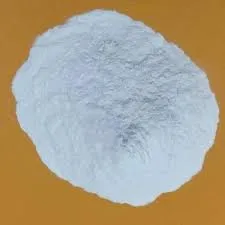
Th11 . 04, 2024 11:37 Back to list
Exploring the Diverse Applications of RDP Powder in Various Industries
Exploring the Uses of RDP Powder
RDP (Redispersible Polymer Powder) is a versatile material widely used in the construction and building industries due to its excellent properties that enhance the performance of various formulations. As a dry powder, RDP can be easily mixed with water and other components to form a stable dispersion, making it an ideal additive for a range of applications. Its unique features, including improved adhesion, flexibility, and water resistance, make it highly sought after in diverse industries, particularly in the production of cement-based materials.
Exploring the Uses of RDP Powder
Another notable application of RDP is in the production of exterior insulation and finish systems (EIFS). RDP modified renders provide an excellent balance of elasticity and breathability, making them suitable for use in various climate conditions. The ability of RDP to maintain its performance despite exposure to moisture and temperature changes makes it invaluable in weather-proofing applications. These properties ensure a high level of durability and longevity for façade systems, which are critical in protecting buildings from the elements.
rdp powder uses

RDP is also commonly used in self-leveling compounds. The incorporation of RDP in these formulations leads to improved flow and workability, as well as reduced shrinkage during drying. This results in a smoother finish and enhanced leveling performance, making RDP modified compounds ideal for floor applications in residential, commercial, and industrial settings. The adaptability of self-leveling compounds with RDP allows for quicker installation and less downtime, which is highly beneficial for contractors and builders.
Moreover, RDP plays a significant role in the formulation of grouts and repair mortars. Its use improves the adhesion and flexibility of these products, making them more sustainable under stress. RDP modified grouts provide superior performance in wet areas, such as bathrooms and kitchens, by resisting water penetration and providing a robust barrier against mold and mildew growth. This ensures a longer-lasting and more aesthetically pleasing finish.
In addition to its applications in construction, RDP also finds utility in the production of paints and coatings. When used in these formulations, RDP enhances the spreadability and uniformity of the paint, while also providing improved adhesion to various substrates. The incorporation of RDP results in a more flexible and durable coating that can withstand environmental stresses, making it ideal for exterior applications.
In summary, RDP powder serves as a key additive that enhances the performance and durability of various construction materials. Its versatility across multiple applications—ranging from tile adhesives to self-leveling compounds, grouts, and paints—makes it an essential component in modern building practices. As the construction industry continues to evolve, the demand for innovative and effective materials like RDP will likely grow, further solidifying its importance in ensuring high-quality and sustainable construction solutions. Understanding and utilizing RDP can lead to enhanced product performance, reduced maintenance costs, and increased satisfaction for both professionals and end-users alike.
-
tile-bonding-additives-for-stronger-bonds
NewsAug.22,2025
-
construction-grade-rdp-for-wholesale-needs
NewsAug.22,2025
-
trusted-wholesale-hec-partners
NewsAug.22,2025
-
hec-solutions-for-industrial-excellence
NewsAug.22,2025
-
construction-additives-need-hpmc-essentials
NewsAug.22,2025
-
hpmc-versatile-cellulose-ether-for-industries
NewsAug.22,2025







